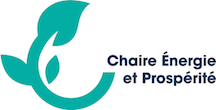Article published in Energy Policy, volume 160
In closing its economic gap with emerging markets, Côte d’Ivoire will face a substantial increase in electricity demand over the next three decades. Côte d’Ivoire has signed the Paris Agreement that aims to achieve a balance between anthropogenic emissions by sources, including electricity, and absorption by sinks of greenhouse gases in the second half of the century. This paper develops a forward-looking tool to explore electricity technology investment paths compatible with both rapidly increasing electricity demand and the Paris Agreement. We build a TIMES model for Côte d’Ivoire and run scenarios with two sets of reasonable assumptions that represent two competing, and probable visions of the future costs of coal and photovoltaic technologies. The results show that a carbon tax of about US$21 in 2035 and US$82 in 2050 on electricity generation will ensure low-carbon electricity generation in line with the Paris Agreement. Although a low-carbon energy mix would create significantly more jobs, the two main challenges in achieving this energy mix will be to install as much as 24 GW of photovoltaic power by 2050 or to achieve a socially accepted carbon tax.
Découvrez en ligne la dernière newsletter et inscrivez vous pour recevoir la prochaine


